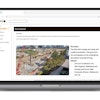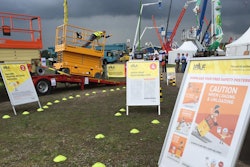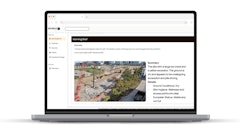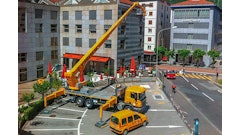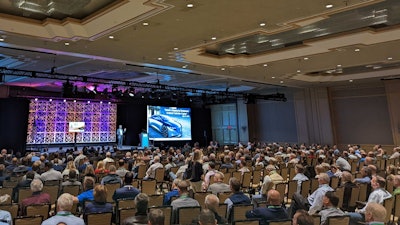
After CONEXPO 2020, the world went virtual. Instead of walking a tradeshow floor and sitting next to your "friendly competition" in an educational session, we sat alone in our homes and tried our best to keep moving forward.
At the onset of 2022, tradeshows thankfully started to happen again. World of Concrete took place in Las Vegas, and we were able to attend the National Asphalt Pavement Association (NAPA) annual meeting in Arizona. There, over 1,000 executives, engineers, estimators, advocacy proponents, business development gurus, health and safety professionals, and industry partners gathered once again to learn the latest challenges, and opportunities, facing our industry.
While it was great to attend the educational meetings, what was even better? Getting to talk to our industry friends once the meetings ended.
"Once a virtual meeting ends, you turn off the camera and sit by yourself again and go back to your daily tasks," Tim Kowalski with Wirtgen America said. "Virtual meetings don't give you the opportunity to walk outside to the lobby to network with those in the industry that are sharing your same struggles."
Being back in person allows for growing together at a more rapid pace because we can share our ideas and opinions more freely. With the industry facing a mounting number of challenges, leaning on each other to advance our initiatives will be more important than ever.
While the world figures out how to adapt to the new normal, here are some ways to accomplish in-person events safely moving forward.
1. Make Safety a Priority
Pulling off a safe and successful in-person event right now is possible, but it requires a lot of planning, as well as active communication with attendees and ongoing collaboration with vendors. Across the country and around the world, live events are gathering steam while still following pandemic protocols to keep all participants safe.
Event planners should consider temperature screenings, questions about vaccinations and on-site COVID-19 tests when organizing a meeting. Make sure these are all added to the registration process. Stuff swag bags with hand sanitizer and extra masks. Prepare for extra cleaning around the meeting rooms.
2. Communicate
Communicating your efforts goes hand in hand with safety priorities. You have to communicate with attendees regularly and consistently.
Let them know how you're keeping them safe. Post reminders about safety throughout the event. Give them an easy way to report activities they don't feel comfortable with. Knowing you're working with them to keep everyone as safe as possible will make everyone feel more relaxed about attending.
3. Educate Attendees
Education will continue to be key to holding safe events and letting your staff and attendees know about when they should stay home will be extremely important. According to the Center for Disease Control (CDC) event coordinators should:
- Advise event staff and attendees to stay home if they have tested positive for COVID-19, are waiting for COVID-19 test results, have COVID-19 symptoms, or if they have had close contact with a person who has tested positive for or who has symptoms of COVID-19.
- Develop policies that strongly encourage event staff who are sick to stay at home without fear of reprisal, and ensure staff are aware of these policies.
4. Offer a Hybrid Model
Those who may feel like they can't attend in-person meetings due to vulnerable health risks should still be able to feel like they are part of your event.
If possible, try to offer a hybrid model where attendees can be both in-person and virtual. Live-streaming events or offering recordings of educational sessions can help make everyone feel involved.
5. Be Flexible
Finally, you have to be ready to pivot and change. Planning an event is not cheap as there are many costs associated with the time committed to planning and reserving a space. However, event planners need to be flexible and consider safety a priority and cancel or postpone the event if it cannot happen safely.
Consider developing flexible refund policies for attendees for events that involve a participation fee is another great option that will allow attendees to feel confident in their safety and participation.
In-person meetings build trust and stronger relationships and we need to continue to find ways to move forward.
See you out there!
Jess



